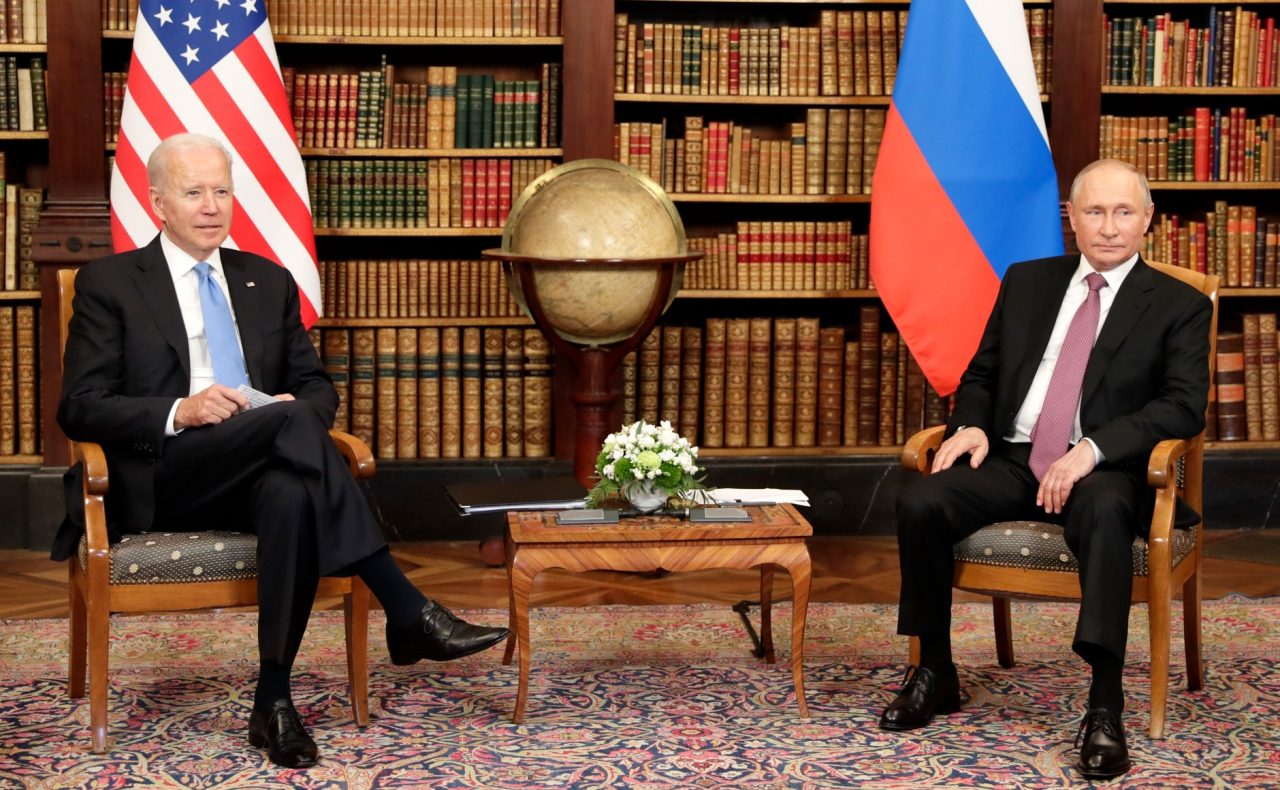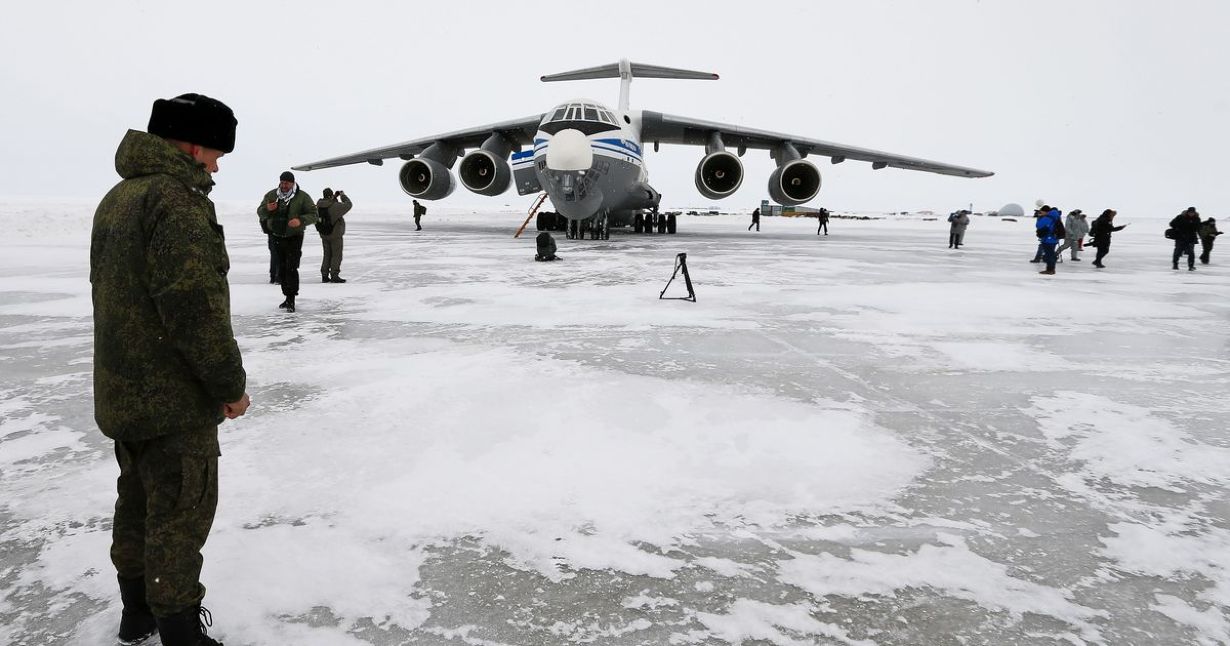Russia has steadily expanded its military presence in the Arctic region despite fighting an ongoing war in Ukraine.
Even though it has suffered substantial military losses in its conflict with Ukraine, Russia has been expanding its military bases in the Arctic region, revealed a fresh batch of satellite photographs obtained by CNN.
Over the past ten years, as climate change has created new opportunities for navigation and exploration of the region’s riches, the West has been increasingly invested in Russia’s Arctic aspirations.
In contrast, Moscow has expressed concern that the North Atlantic Treaty Organization (NATO) and the United States threaten its position in the Arctic.

In an exclusive interview last week, NATO Secretary General Jens Stoltenberg recently told CNN that there is now “a significant Russian military build-up in the high north,” with recent tensions causing the alliance to “double its presence” in response.
Earlier, there were reports that Russia had sent up to three-quarters of its land forces from the High North region in the Arctic to support their shaky invasion of Ukraine. However, the satellite images reveal a different picture.
A Western intelligence official reportedly told CNN, “At the start of the war with Ukraine in February, some submarines were repositioned to signal “this is a real capability,” but they soon returned to standard high readiness.
Expanding Russian Militarization
The satellite images, which CNN received from Maxar Technologies, show several Russian radar bases and runways that have been upgraded during the last twelve months. The photographs don’t reveal any significant changes but rather the ongoing fortification and expansion of Russian military assets in the region.
According to Maxar, the photographs show that the radar stations in Olenegorsk, on the Kola Peninsula in northwest Russia, and Vorkuta, just north of the Arctic Circle, are still in operation.
They appear to indicate progress on one of the five Rezonans-N radar systems at Ostrovnoy, a location along the Barents Sea, close to Norway and Finland. Russian officials assert that the Rezonans-N can find stealthy vehicles and objects.
Further, three new radomes—the weatherproof containers used to cover radar antennas—were finished this year at the Tiksi air defense facility in the far northeast. Additionally, the runway at Nagurskoye air base, Russia’s northernmost military installation, has been upgraded.
The runways at the ‘Temp’ air base on Kotelny Island, northeast of the nation, are upgraded too.
It is pertinent to mention that the Russian posture in the Arctic is motivated by apprehension about being encircled by NATO and its allies, which is made worse by deteriorating Western ties due to Russia’s renewed conflict with Ukraine and an imminent expansion of NATO.

Further, the new satellite imagery comes months after Russian political scientist Anatoly Gagarin emphasized that the US perceives the Arctic as a region for solving military problems, which had been the object of close attention for over five years.
The US and NATO countries have increased their military activities to counter-balance the Russian militarization of the region, which has caught pace in the last five years. The American concern about Russian militarization was best captured in an expression by a US Senator earlier this year.
Senator Angus King said in his interview, “Russia has a huge border on the Arctic Ocean, which they’re militarizing the hell out of right now. It’s a national security issue for everyone in the United States, whether in Texas or Minnesota.”
Militarization Of The Arctic By Russia & NATO
A previous set of satellite imagery indicated Russian military bases and equipment along the country’s Arctic coastline. The images also showed underground warehouses that probably housed Poseidon and other cutting-edge armaments.
The reports published earlier this year also claimed that Russian military hardware in the High North includes bombers, MiG31BM aircraft, and cutting-edge radar systems along the Alaskan coast.
The painstaking modernization of airfields and “trefoil” sites along Russia’s Arctic coast over the previous five years was documented in the satellite images. These sites displayed a shamrock-like pattern painted in the Russian flag’s red, white, and blue colors. The bases are situated within Russian territory and are essential to the nation’s legal border and coastal defense, as previously noted by EurAsian Times.
***UPDATE***
The #Russian navy nuclear submarine Belgorod which caused a media scare a while back is now in port in Severodvinsk, Russian Arctic
Believed to have been back a while, but visible in satellite imagery taken today pic.twitter.com/PfUyKOK5EH
— H I Sutton (@CovertShores) October 16, 2022
In October this year, the Russian submarine Belgorod which remained missing from action was spotted in the Arctic. With the stealthy Poseidon torpedo loaded, this submarine can elude coastal defenses.
Besides, media reports have suggested that Russia wants to leverage the Arctic’s resources for commercial shipping and transit. The Northern Sea Route could cut around two weeks off the journey across the Suez Canal, and Russia could benefit economically.
Vladimir Putin said in a speech at the inauguration of a brand-new nuclear-powered icebreaker in St. Petersburg last month (November 22) that the establishment of the “most important” Northern Sea Route “will allow Russia to reveal its export potential fully and to establish effective logistics routes, including to Southeast Asia.”
The US-led NATO has long been wary of Russian ambitions. The most egregious charge against Moscow is that it is systematically militarizing the Arctic territory unilaterally and without consulting the other five players in the area.
The Arctic Ocean is surrounded by six countries: Russia, Canada, the United States, Denmark, Norway, and Iceland. However, the nearest Arctic stakeholder, i.e., the United States, has significantly upped the ante to prevent Russia from encroaching on the Arctic.
The United States stated in August of this year that it would establish the post of Arctic ambassador-at-large to strengthen diplomatic ties as China and Russia increase their presence in the waterways made available by climate change.
?#Zakharova: The United States’ new National Strategy for the Arctic Region has become more politicised and packed full of anti-Russia ideas.
☝️ A course aimed at militarising Washington’s Arctic policy and intensifying military rivalry is obvious. pic.twitter.com/SxQ5f5rxLa
— MFA Russia ?? (@mfa_russia) October 11, 2022
To be more prepared for the threat that China and Russia pose, the US and Canada have increased their military cooperation and drills in the Arctic.
In addition, regular Bomber Task Force (BTF) sorties over the Arctic are now being flown by American bombers. The presence of American submarines is also regularly noted. The US Submarine Force completed the 98th iteration of Ice Exercises in March 2022.
#B1 Lancers flew a #BTF mission with Royal Norwegian Air Force F-35s over the Arctic yesterday as part of Bomber Task Force Europe 22-1. This mission was designed to strengthen collective #deterrence & security across the region. #AlliesandPartners
More: https://t.co/eH5qeqHaX4 pic.twitter.com/wouMPv2Jwa
— United States Strategic Command (@US_STRATCOM) November 2, 2021
The conflict in Ukraine has also increased NATO’s involvement in the region. Seven of the eight nations in the Arctic will be NATO members after Finland and Sweden formally ratify their membership, as is widely anticipated.
In terms of commerce and human settlement, the Arctic has remained one of the few unexplored regions worldwide. However, new natural waterways have been produced due to glaciers melting and the average temperature steadily rising due to global warming.

In fact, given how quickly polar ice is melting, some predictions claim that the Arctic may be entirely free of summer sea ice as early as 2035. This will pave the way for more saber-rattling by the two opposing sides and more competition and militarization of the region.
Russia’s militarization of the region is not an aberration. As NATO chief Stoltenberg said, “The shortest way from Russia to North America is over the Arctic North Pole. So the strategic importance of these areas has not changed because of the war in Ukraine.”
- Contact the author at sakshi.tiwari9555 (at) gmail.com
- Follow EurAsian Times on Google News




